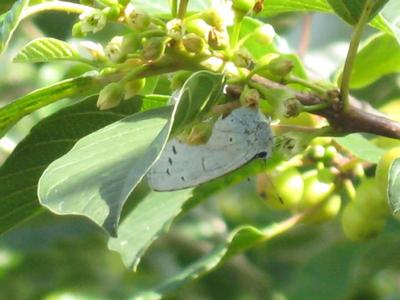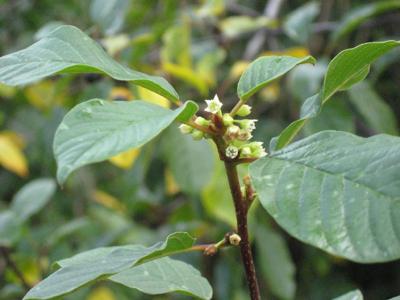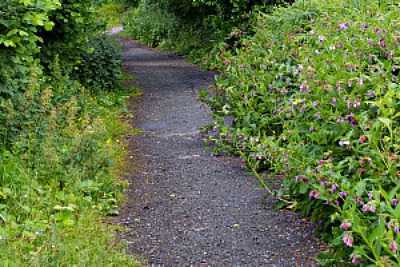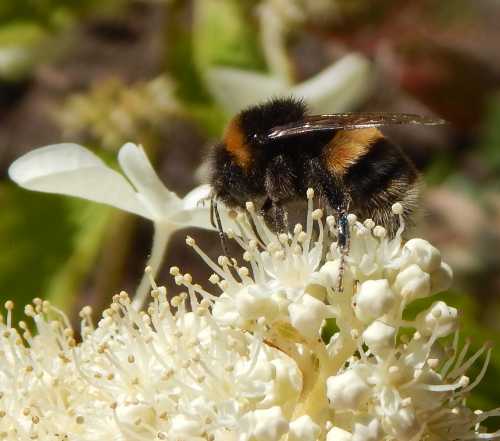The Importance Of Hedgerows For Biodiversity And Bees
by Marco
(Breda, Netherlands)
Hedgerows
And Shrubs For Bees And Pollinators
I grew up in the countryside in an area where still some of
the most beautiful hedgerows are found. I still recall the scent of hawthorn in
flower and the sound of songbirds singing in the dense hedges to defend their
territories.
When it comes to hedges, many species of shrubs make excellent additions to the
garden and are ideal for bees and other pollinators.
A bee friendly garden is of course not only beneficial to bees but other pollinators will thrive and they boost wildlife in your garden: think about all the fruit the shrubs carry in autumn the birds will be thankful for!
Sometimes, people look only at flowers to create their bee friendly garden but
shrubs are quite important as well. As most will flower in masses, the bees can
collect their food in an economical way: they simply move from one flower to
the next without spending a lot of energy on flying; a very efficient way of
foraging indeed.
Let’s have a look at which shrubs for bees we can possibly plant in our garden.
 Flowering shrubs provide food for bees and other pollinators, including butterflies.
Flowering shrubs provide food for bees and other pollinators, including butterflies.
One of the best choices is hawthorn: Crataegus monogyna. There is
another variety but this one is less common: Crataegus laevigata. Both
are important for wildlife.
A study revealed that more than 200 insects and
mites live on hawthorns. Now you understand why your birds are spending so much
time in these bushes: abundance of food!.
Honey bees, bumble bees and bees of the Osmia and Andrena family also feed on
hawthorns. The hawthorns flower from May to June.
Another possibility is holly, Ilex aquifolium, a beautiful and native
evergreen tree. I have a soft spot for holly. They are one of the foodplants
for our holly blue, the flowers are important for bees and the bees take care
of the pollination of flowers.
The berries that grow on the female plants are an important food for thrushes. Osmia and Andrena bees are also regular visitors of the flowers, in addition to bumble bees and honey bees. If you want berries, please make sure you have a male plant nearby. They flower from May to June.
 Alder Buckthorn
Alder BuckthornA third shrub is the unsung hero of my garden: alder buckthorn Rhamnus frangula. It is a shrub that flowers for months in a row and although its flowers are inconspicuous, they form a rich food source for our bees, providing both nectar and pollen.
In my garden they flower from May until late September,
beginning of October. It is together with its close relative the Rhamnus
cathartica - or Purging Buckthorn, the only food plant for the caterpillars
of our beautiful brimstone butterflies. In late summer and autumn the berries
are eaten by different kind of birds.
The fourth shrub I would like to focus on is wild privet: Ligustrum vulgare.
It is a shrub that grows particularly well on calcareous soils.
The leaves are
a bit dull green; the flowers have a strong scent and are loved by honey bees,
bumble bees and bees of the Andrena and Mechachile species. The berries are
eaten by birds and the leaves are eaten by the caterpillars of the privet hawk
moths.
Other plants worth considering are goat willow, providing a very good quality
of pollen (male flowers) or nectar (females), crab apple, sweet briar, hazel,
spindle.
Planting native shrubs for bees and pollinators is also recommended for their
added value to other biodiversity in the garden. However, this does not mean
that we should get rid of our non native plants: after all, aren’t we all fond
of our non-native butterfly bush and lavenders?
Site owners comment: Marco, thank you for another wonderful comment! I quite
agree with you - hedgerows and shrubs are highly valuable.
As well as foraging
opportunities on flowering shrubs, some bumble bee species like to make nests in
abandoned rodent holes, sometimes found at the base of the shrub. And yes,
species which also then produce berries for birds are especially useful.
I quite agree with you again with regard to non-native plants. We have actually lost many native wild flower habitats and plant species - a pattern seen in many parts of the world. These losses have to be replaced with something!
Many vegetables we grow in our gardens are non-native, and we are happy to eat them. Well, perhaps our pollinators need help with an international diet too!
As long as we don't allow invasive species to take over entire areas, I see no problem with non-native plants, and many gardens would be quite bare without them, and this wouldn't help pollinators or other wildlife. Thank you again Marco! xx
More......
Create a
lawn for bees

